By Fran McVeigh
The fact that we were trending in the opening moments of our #G2Great chat “Shining a Spotlight on Push In/Pull Out”, on June 28, 2018, was not a surprise. Services for students with Individual Education Plans (IEPs) have been a hot topic since the first federal law, PL 94-142 (1975) which guaranteed: a free, appropriate education (FAPE) in the least restrictive environment (LRE). Every reauthorization since that initial law has involved change, but the requirement for educating students in the least restrictive environment remains a topic that requires ongoing discussion in every school across the country.
A walk down memory lane in special education would also shine some light on “mainstreaming” and “inclusion” as other terms used to describe student services. Mainstreaming brought special-needs students who were being served in separate classrooms back into general education classes. It was assumed that these students would be able to find success once mainstreamed, but access alone was not the issue. Many students still struggled because specialized assistance within the regular education classes was not provided. To remedy this, inclusion was the next wave of reform. Students with special needs were placed in general education classes but were also supported by specialists in those classes. Co-teaching became one form of support that still exists because IDEA continues to require students to be educated in the least restrictive placement.
As a former special education teacher who has taught in both push in and pull out programs, I eagerly anticipated this chat about services for ALL students including those who are striving, whether they have an IEP or they are Gifted and Talented. In reality this topic has huge implications because it can also include any student ever pulled out for any services: a Tier 2 or 3 Intervention, English Learner instruction, band lessons or even speech services.
Let’s begin with what was revealed in our conversations during the #G2Great chat. This quote of Johnny Downey’s sums up much of the thinking and also matched Amy’s quote about many factors being involved. It’s complicated!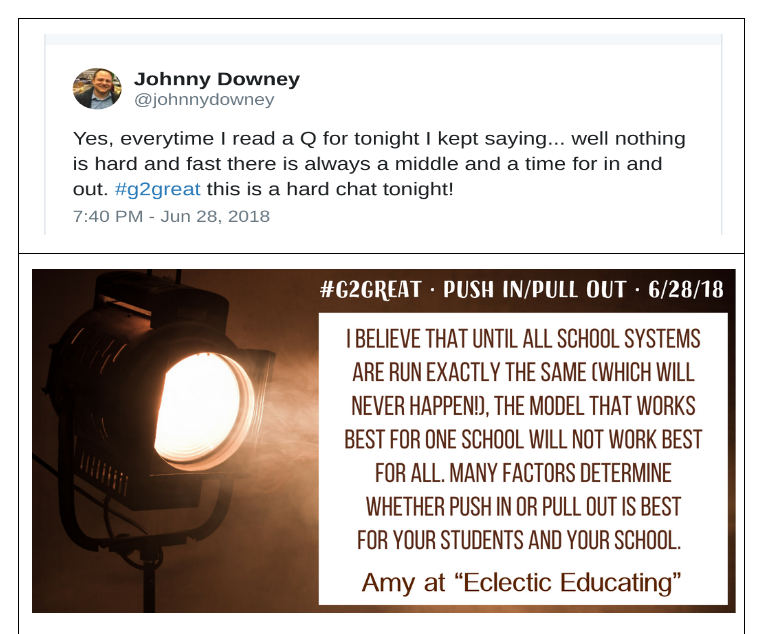
When is the location or the content of instruction an equity issue?
The presumption is that each child will first receive quality core or Tier 1 instruction in the same classroom as their peers. Removal to another location through a Pull Out program during core instruction would be an equity issue because those students could be denied basic instruction. It depends what they would be “missing” in the classroom. However, this could also happen with Push In instruction if the student had small group instruction during a whole class Read Aloud time. The very elements of literacy instruction that are most needed by students, especially independent reading time, are often assigned as time for additional instruction. This does become an equity issue because the student may actually have access to less time for reading than his or her peers.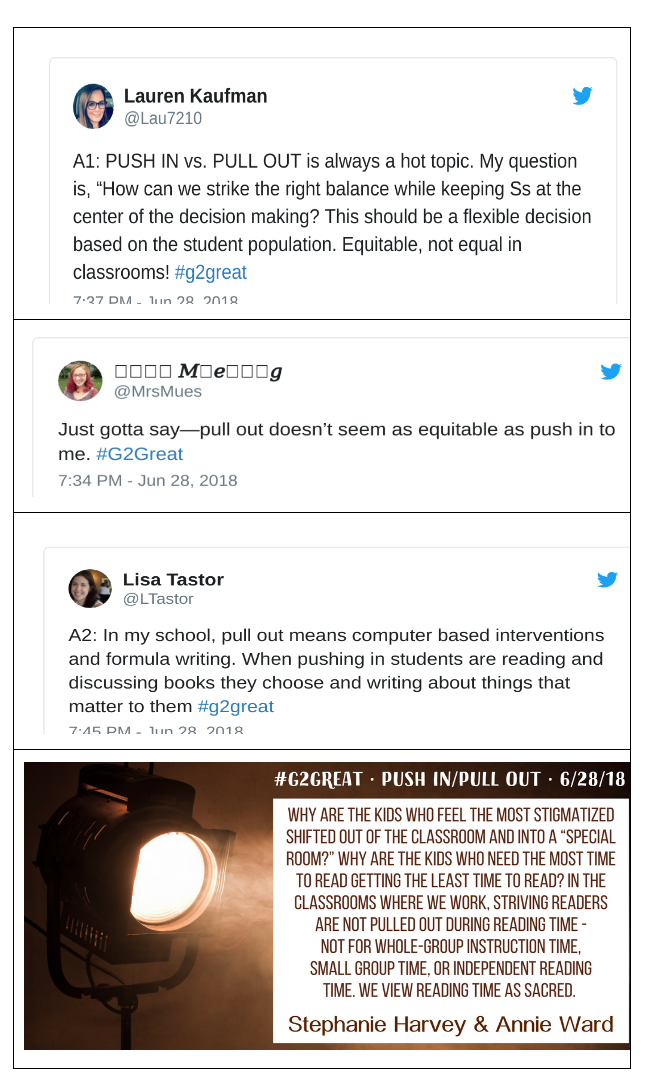
What is the primary focus for decision-making?
The student must be at the heart of all decisions made about where and when extra instruction will be provided. This seems simpler for students with IEPs because federal legislation, IDEA, guarantees parental rights:
“each public agency must ensure that the parents of each child with a disability are members of any group that makes decisions on the educational placement of their child.” Source Link
But this is also true for all students whether they are missing class for an intervention, speech instruction, or any of the other myriad of reasons that students are pulled out of classrooms. Parents should be part of the decision-making process. No parent of a fifth grader should be blindsided by this statement, “Well, she is not doing well in social studies because she missed it for the last two years because of her intervention time.“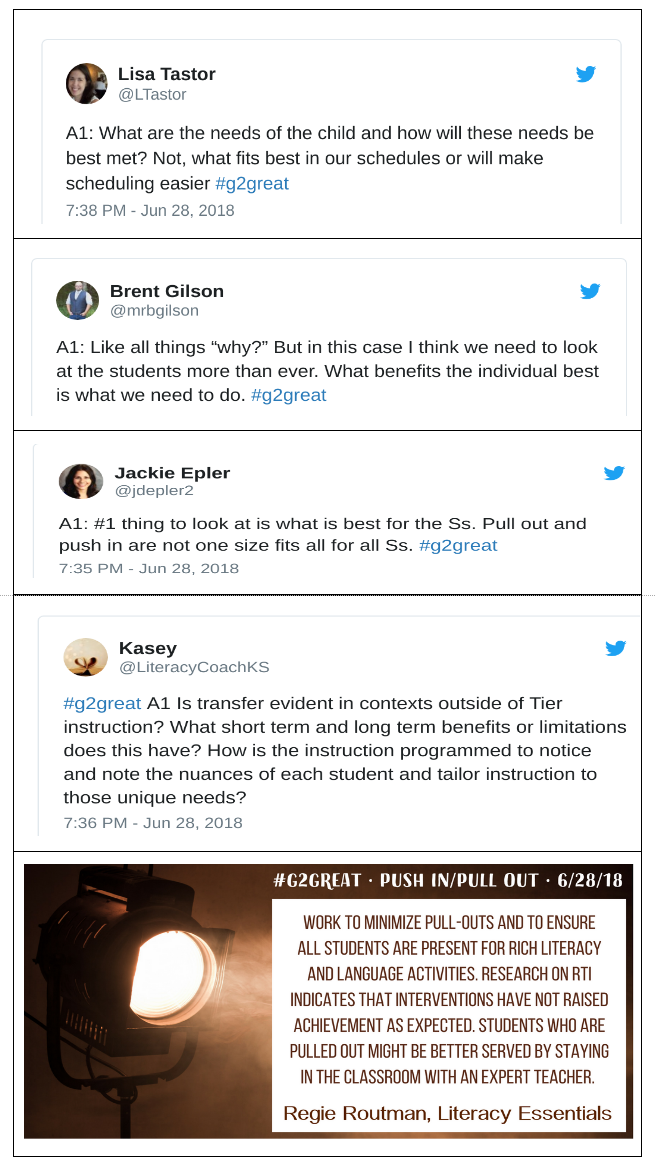
What issues must be considered?
Quality Tier 1 instruction is critical and must be provided by expert teachers.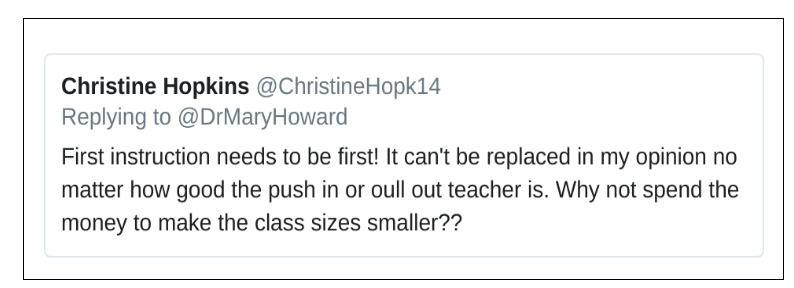
Neither push in or pull out is ever perfect for all children.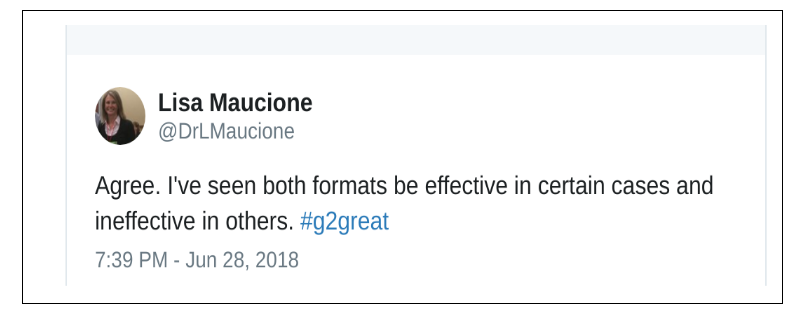
We must consider effectiveness of instruction and collect results to see if our students are really “learning” and if the support is increasing student success and joyfulness.
Decisions cannot EVER be about time, the schedule or the adults. It’s not their education on the line.
Sometimes, pull out instruction can be more efficient and more effective.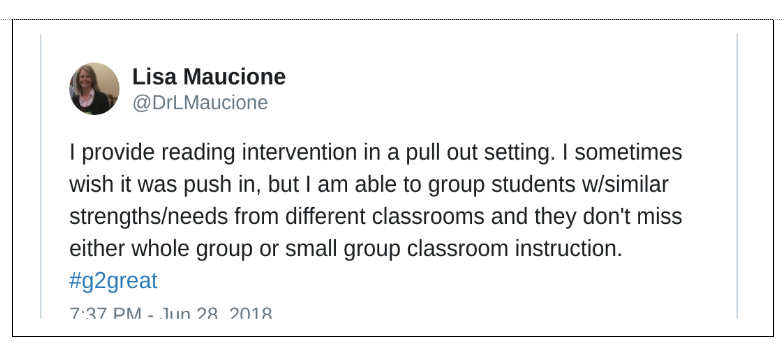
Thoughtful discussions should always be a part of the process for EACH and EVERY student.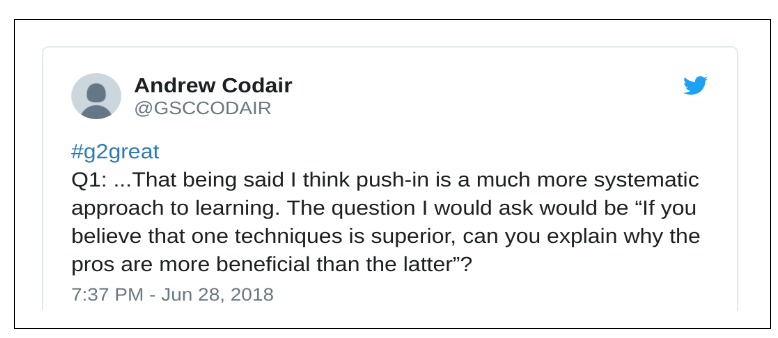
And FINALLY, the biggest concern with Push In or Pull Out is the feelings and perceptions of the students involved. When do we include students in the decision-making process and what do they tell us?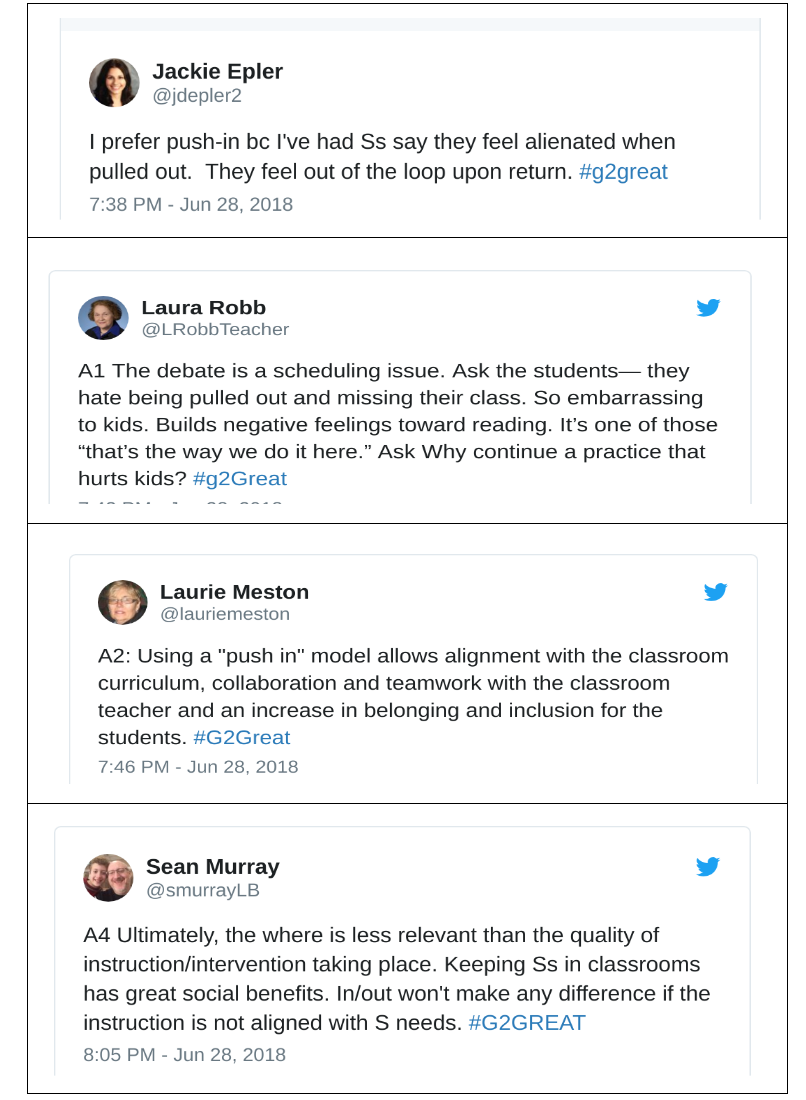
Access to quality instruction is the right of all students. Access in the least restrictive environment is also a legal mandate for many students as parents consider just where that instruction should take place. An arbitrary requirement for ONLY “Pull Out” or “Push In” services must be rejected because the needs of the students should be a central focus of all decision-making. Student responses to their education, as well as their attitudes and perceptions, need to be considered as the focus of staff must be to accelerate learning in order to decrease learning gaps and develop a love of learning. Team Teaching or Co-Teaching is one current popular way of meeting students’ needs in a less intrusive setting and you can read more about that in the Wakelet archive. Data on the successes of Push In / Pull Out settings is inconclusive but more students are successful in life after learning in Push In settings. Other positive benefits from Push In settings include: more positive interactions with peers, improvement on standardized tests, and increased social and communication skills. Decisions about instruction must occur on a student by student basis in order for ALL students to have access to the highest quality education available in the least restrictive environment.
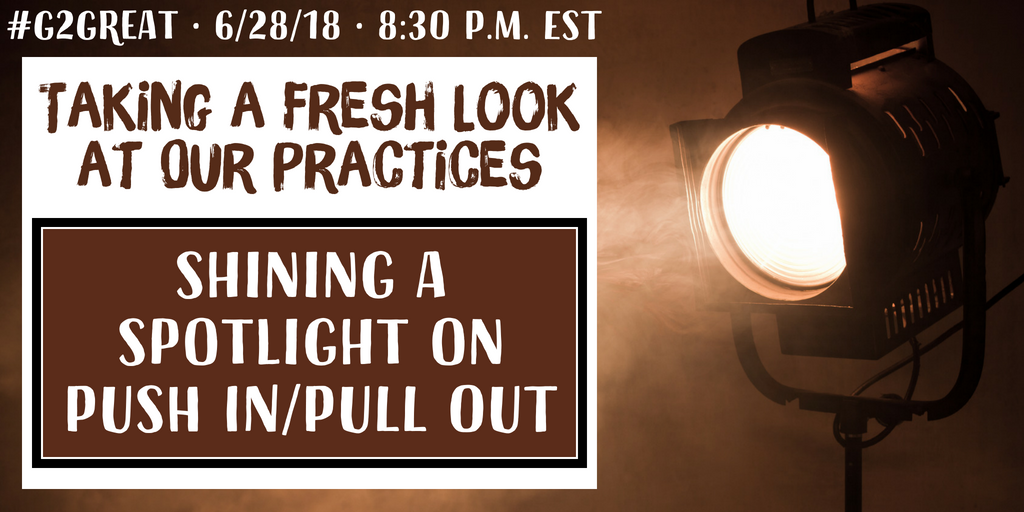
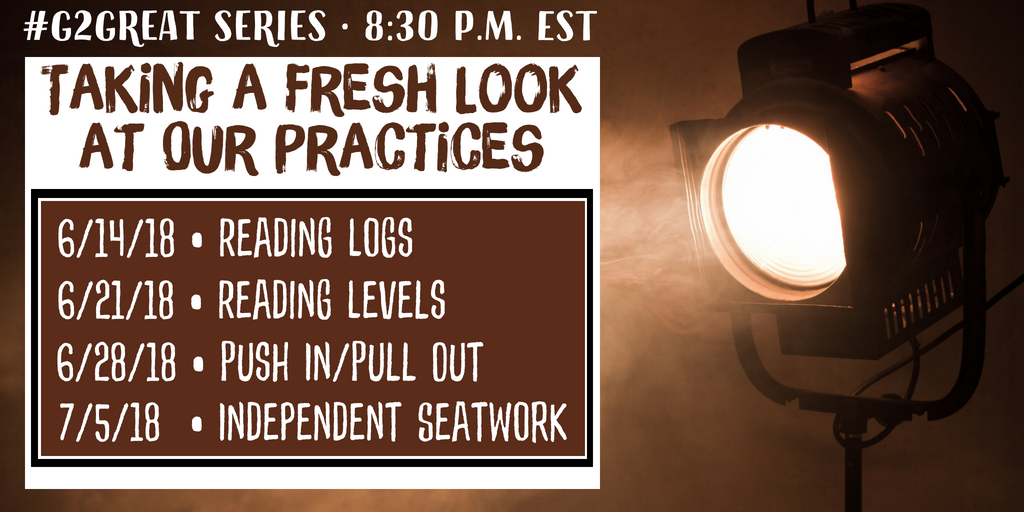
Fran, Thanks for this thorough and balanced piece on pull in/push out. You remind us that whatever decision we make “The student must be at the heart” of it–true not just for intervention decisions but for all teaching and assessing decisions. With pull-outs, it’s not uncommon that the interventionist’s schedule takes priority over the student’s needs. That said, as with all expert teaching, there is no one size fits all or one “right” way. Knowledgeable teachers and leaders do whatever they can to ensure that what’s best for the student remains at the forefront of instruction and learning. With admiration, Regie
Thank you, Regie. So true that “The student must be at the heart” of all decisions – every day, every building, and every state. It’s hard to make sure that our preferences don’t become “the way it’s always done” due to in-grained habits!